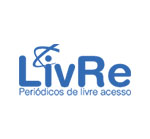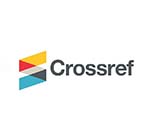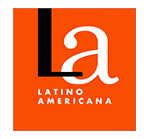El temperamento sí importa: Características psicológicas necesarias para liderar escuelas
DOI:
https://doi.org/10.53940/reys.v2i3.60Palabras clave:
liderazgo educativo, mejora escolar, cambio educativo, autoeficacia, resiliencia, optimismoResumen
El liderazgo educativo es clave para la transformación y mejora de la educación. Este estudio analiza las características psicológicas necesarias que deben tener los líderes educativos para realizar cambios en educación. Las características psicológicas que los líderes deben desarrollar a un nivel más allá de lo común son la autoeficacia, la resiliencia y el optimismo. Se explica el significado de cada una y se ofrecen recomendaciones para su desarrollo tomando como referencia la literatura y la experiencia de directores de escuelas. Se recomienda a los reclutadores de directores, tener en cuenta estas características en el proceso de selección.
Descargas
Referencias
Bandura, A. (1977). Self-efficacy: toward a unifying theory of behavioral change. Psychological Review, 84(2), 191–215. doi: 10.1037/0033-295x.84.2.191 DOI: https://doi.org/10.1037/0033-295X.84.2.191
Bandura, A. (1995). Self-efficacy in changing societies. Cambridge University Press. doi: 10.1017/CBO9780511527692 DOI: https://doi.org/10.1017/CBO9780511527692
Bandura, A. (1993). Perceived self-efficacy in cognitive development and functioning. Educational Psychologist, 28(2), 117–148. doi: 10.1207/s15326985ep2802_3 DOI: https://doi.org/10.1207/s15326985ep2802_3
Barrientos, R. (2015). El liderazgo sí importa: aportes para una comprensión de la dirección escolar. Educationis Momentum, 1(1), 83–119. Recuperado de https://revistas.ucsp.edu.pe/index.php/emomentum/article/view/71
Chemers, M. M., Watson, C. B., y May, S. T. (2000). Dispositional Affect and Leadership Effectiveness: A Comparison of Self-Esteem, Optimism, and Efficacy. Personality & Social Psychology Bulletin, 26(3), 267–277. doi: 10.1177/0146167200265001 DOI: https://doi.org/10.1177/0146167200265001
Cohen, S., Doyle, W. J., Turner, R. B., Alper, C. M., y Skoner, D. P. (2003). Emotional style and susceptibility to the common cold. Psychosomatic Medicine, 65(4), 652–657. doi: 10.1097/01.psy.0000077508.57784.da DOI: https://doi.org/10.1097/01.PSY.0000077508.57784.DA
Cross, R. L., y Parker, A. (2004). The Hidden Power of Social Networks: Understanding how Work Really Gets Done in Organizations. Harvard Business Press.
Davis-Blake, A., y Pfeffer, J. (1989). Just a Mirage: The Search for Dispositional Effects in Organizational Research. Academy of Management Review, 14(3), 385–400. doi: 10.5465/amr.1989.4279071 DOI: https://doi.org/10.5465/amr.1989.4279071
Everson, S. A., Kaplan, G. A., Goldberg, D. E., y Salonen, J. T. (2000). Hypertension incidence is predicted by high levels of hopelessness in Finnish men. Hypertension, 35(2), 561–567. doi: 10.1161/01.hyp.35.2.561 DOI: https://doi.org/10.1161/01.HYP.35.2.561
Fullan, M. (2013). Motion Leadership in action. More skinny on becoming change savvy. California, EE. UU.: Corwin Press.
Gielan, M. y Achor, S. (2020). What Leading with Optimism Really Looks Like. EU.: Harvard Business Review. Recuperado de https://hbr.org/2020/06/what-leading-with-optimism-really-looks-like
Harvard Health Publishing. (2008). Optimism and your health. EU.: Harvard Health Publishing. https://www.health.harvard.edu/heart-health/optimism-and-your-health
Leithwood, K., Louis, K. S., Anderson, S. y Wahlstrom, K. (2004). How Leadership Influences Student Learning. Review of research. Recuperado de https://www.inflexion.org/how-leadership-influences-student-learning/
Leithwood, K. (2012). Optimism, Resilience and Efficacy [Video]. De: https://thelearningexchange.ca/videos/ken-leithwood-optimism-resilience-and-efficacy/
Leithwood, K., y McCullough, C. (2020). Developing Future School and District Leaders. A Review of Concepts and Evidence. Toronto, Canada: The Learning Partnership.
Scheier, M. F., Matthews, K. A., Owens, J. F., Schulz, R., Bridges, M. W., Magovern, G. J. y Carver, C. S. (1999). Optimism and rehospitalization after coronary artery bypass graft surgery. Archives of Internal Medicine, 159(8), 829–835. doi: 10.1001/archinte.159.8.829 DOI: https://doi.org/10.1001/archinte.159.8.829
Sutton, R. I. (2007). Weird ideas that work: How to build a creative company. Free Press.
Sutton, R. I. (2011). Buen jefe, mal jefe. Conecta.
Publicado
Número
Sección
Licencia
Derechos de autor 2021 Roberto Barrientos Mollo

Esta obra está bajo una licencia internacional Creative Commons Atribución 4.0.
Los autores conservan de manera irrestricta todos los derechos sobre la obra.




























